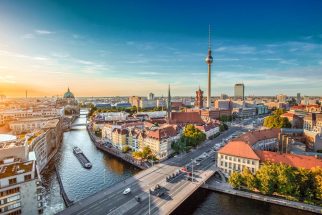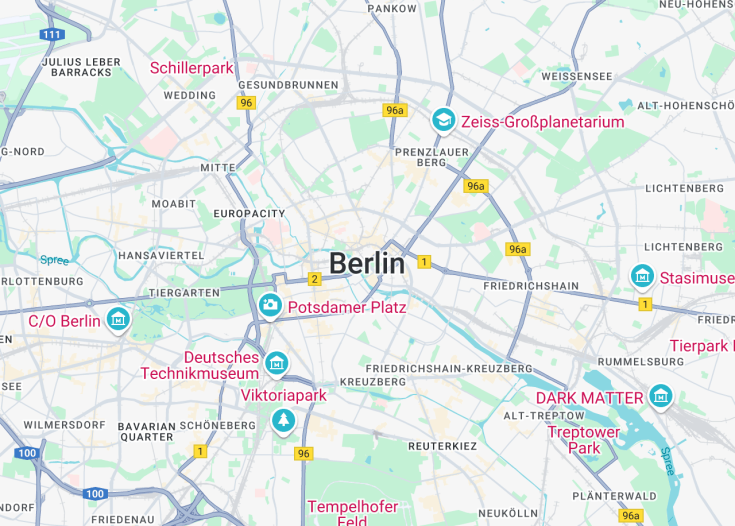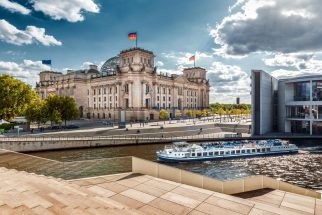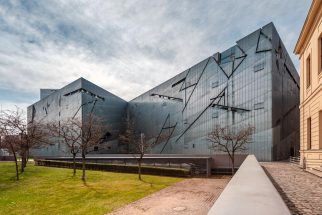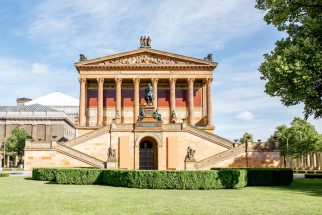Berlin is the largest city in Europe and one of the most visited cities in Europe thanks to its rich history, its nightlife scene and for hosting a number of remarkable sights and museums.
We suggest at least 3 days to visit Berlin but 4 or 5 days are the ideal time to spend in this capital given all the things that you can do in the city.
The best time to visit the city is May through September when the temperature are mild and the weather is ideal for cafe sitting and city strolling. Winter, on the other hand, is cold with an oscillation of temperature between 20 and 30 Fahrenheit degrees.
Top things to do & see in Berlin
Select the following sights and activities to discover best tickets and tours available in Berlin.
Berlin: A City Steeped in History and Modernity
| Country | Germany |
| Time in Berlin | GMT+1 |
| Language spoken | German |
| Population | 3.8 million (Source: City’s official statistics, 2023) |
| Currency | Euro (EUR, €) |
| Airports |
|
Renowned for its rich tapestry of history, culture, and vibrant nightlife, Berlin stands as a beacon of modern cosmopolitan life that also preserves the scars of its tumultuous past. The capital city of Germany, Berlin is situated in the northeastern part of the country and is the centerstage for major historical events like the Cold War and the fall of the Berlin Wall, which symbolically marked the end of segregation and spawned a new era of unification within Europe. Berlin’s urban vitality is enhanced by its diverse population, groundbreaking architecture, abundant parks, and a relentless dedication to the arts.
Where is Berlin?
Berlin is located in northeastern Germany, straddling the banks of the River Spree.
Distances:
| Route | Distance by car | Time by car |
|---|---|---|
| Munich to Berlin | 382 miles (615 km) | Approx. 5 hours 40 min |
| Hamburg to Berlin | 181 miles (291 km) | Approx. 3 hours |
| Frankfurt to Berlin | 328 miles (528 km) | Approx. 5 hours |
What is Berlin famous for?
Berlin is famous for its historical landmarks like the Brandenburg Gate, the Berlin Wall, and the Reichstag building. It’s also known for its vibrant cultural scene and festivals, including the Berlinale, one of the top film festivals globally.
History
Berlin, the capital city of Germany, has a profound history that spans centuries, marked by profound transformations, wars, and continual rebirth. Here is an exploration of Berlin’s historical timeline, highlighting the significant periods that have shaped the city into the vibrant metropolis it is today.
12th Century – Middle Ages
The earliest records of settlements in the Berlin area date back to the 12th century when Slavic and German populations intermingled. Berlin itself was first mentioned in the 13th century. It was established as a small trading post by the river Spree, where merchants and artisans gathered.
1701 – The Kingdom of Prussia
As the capital of the growing Kingdom of Prussia from 1701, Berlin began to develop significantly. Under the rule of the ambitious Hohenzollern dynasty, Berlin expanded its influence, laying the groundwork for its future status as a major European power. The city’s architecture, culture, and military presence grew, reflecting its rising prominence.
1871 – German Empire
With the unification of Germany in 1871, Berlin was proclaimed the capital of the German Empire. This period saw rapid industrial growth and urban expansion, turning Berlin into a bustling metropolis. Iconic buildings like the Reichstag were constructed, symbolizing the city’s newfound importance.
1918 – The Weimar Republic and WWII
Following the defeat in World War I, Berlin became a hub of political and cultural experimentation during the Weimar Republic. It attracted intellectuals, artists, and innovators from around the world. However, the city also faced significant turmoil during World War II, suffering extensive damage and division during the Nazi regime and subsequent Allied bombings.
1949 – Cold War
Post-war Berlin was a city divided. The Berlin Wall, erected in 1961, became the most potent symbol of the Cold War, splitting the city into East and West Berlin. This period was marked by espionage, political strife, and the stark contrast between the socialist East and the capitalist West.
1990 – Reunification to Present
With the fall of the Berlin Wall in 1989, Berlin embarked on a new era as the city officially reunited in 1990. It was restored as the capital of Germany in 1991, leading to major urban redevelopment projects. Today, Berlin stands as a global city, known for its arts, culture, and liberal social attitudes, continually evolving while remembering its complex past.
Visit Berlin
What to see and do in Berlin
Exploring Berlin offers a journey through layers of history, culture, and modern attractions. Key highlights include:
- The Brandenburg Gate, an iconic symbol of peace and unity.
- The Reichstag Building, with its stunning glass dome and historical significance.
- Museum Island, a UNESCO World Heritage site featuring five museums dedicated to art and antiquities.
- The Berlin Wall Memorial, which provides poignant insights into the divisions of the Cold War.
- Potsdamer Platz, a bustling public square that symbolizes Berlin’s redevelopment.
- Berghain, known globally for its cutting-edge electronic music scene.
Berlin is also renowned for its vibrant street art, diverse culinary scene, and lively festivals.
Festivals and Events in Berlin
Throughout the year, Berlin hosts an array of events that reflect its dynamic culture and history. Key events include:
- The Berlinale (Berlin International Film Festival) in February, one of the leading film festivals worldwide.
- The Carnival of Cultures, a vibrant street parade celebrating diversity in May.
- The Berlin Art Week in September, showcasing contemporary art and performances.
- The festive Christmas markets spread across the city in December.
These events highlight Berlin’s role as a cultural hub in both Europe and the world.
Best time to visit Berlin
The ideal time to visit Berlin depends on personal preferences and interests. Spring (April to June) and autumn (September to October) are excellent for mild weather and fewer crowds. Summer is perfect for outdoor activities and festivals, while winter attracts those who enjoy festive Christmas markets and a snowy backdrop.
Is Berlin worth visiting?
Berlin, with its rich historical tapestry and vibrant contemporary culture, is undoubtedly worth visiting. The city offers a unique blend of the past and the present, making it a fascinating destination for history buffs, art lovers, and party-goers alike. Whether strolling through historic sites, exploring world-class museums, or enjoying its famous nightlife, Berlin promises an enriching and unforgettable experience.

